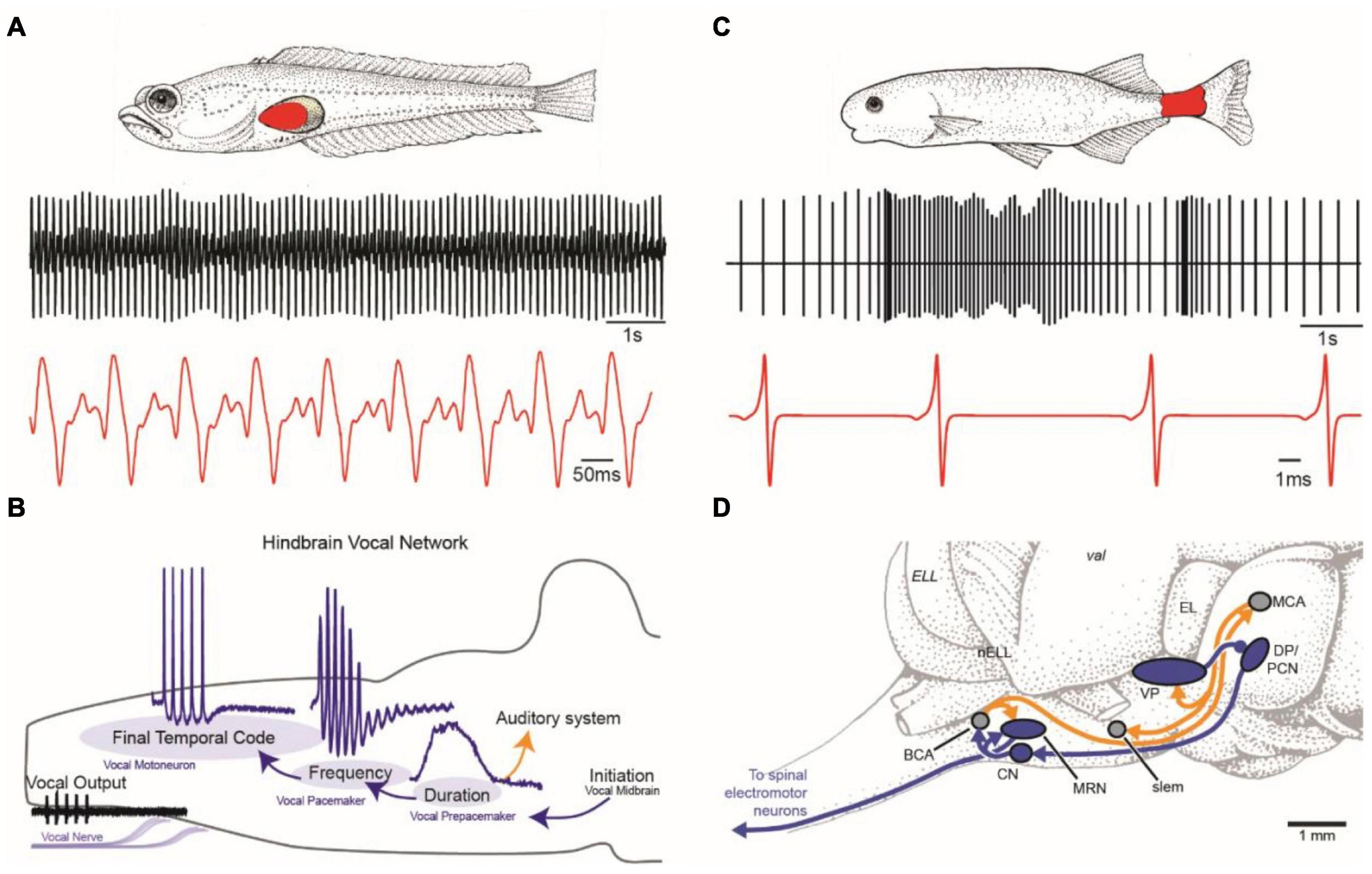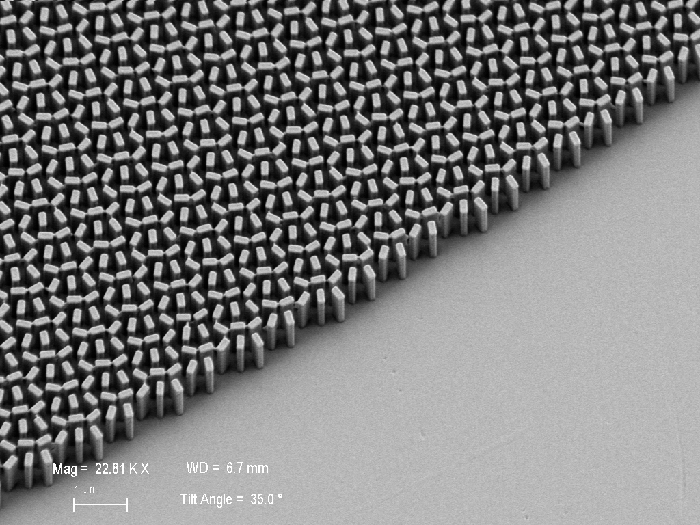Electric Fish and NeuroAI represent a fascinating intersection of biological study and technological advancement. Researchers have turned their attention to the unique capabilities of electric fish, particularly the elephantnose fish, to unlock insights into artificial intelligence systems. These remarkable creatures possess the ability to generate and interpret electric fields, serving as a natural model for understanding complex communication and perception within NeuroAI applications. By examining how these fish exhibit collective intelligence through their electric pulses, scientists are uncovering principles that could significantly enhance the development of multi-agent systems. As we delve deeper into these interactions, the potential for breakthroughs in artificial intelligence becomes increasingly evident, paving the way for innovative AI solutions that mimic nature’s ingenuity.
The exploration of weakly electric fish into the realm of Neural Artificial Intelligence (NeuroAI) unveils a unique perspective on communication systems and collaborative behavior. Known for their specialized sensory abilities, these fish, including the intriguing elephantnose fish, highlight significant parallels with advanced computational models. Investigating their electrical signaling not only sheds light on natural intelligence but also contributes to developing sophisticated artificial systems that can operate cooperatively. This synergy between biology and technology opens new avenues in understanding how artificial agents can emulate the nuanced interactions observed in natural environments. By leveraging insights from the collective behavior of these aquatic organisms, researchers are poised to enhance the efficacy of multi-agent solutions in artificial intelligence.
The Insights from Electric Fish: Unveiling Collective Intelligence
Electric fish, particularly the elephantnose fish, showcase a unique model of collective intelligence through their electric pulse communication system. This system not only enables these fish to navigate their often murky habitats but also facilitates social interactions vital for survival. By emitting electric organ discharges (EODs), these fish communicate complex information such as the presence of food or threats within their environment. Such interactions are easier for researchers to analyze, as they reveal the underlying principles of collective intelligence—how entities cooperate or compete based on dynamic social contexts.
The study of these fish offers tantalizing insights into how multi-agent systems operate. Just as the electric fish utilize a simple yet effective form of communication to coordinate their activities, researchers like Kanaka Rajan are exploring how these findings can translate into artificial intelligence systems. The complexities arising from these natural interactions can inform the development of AI that exhibits similar behaviors, potentially leading to more collaborative and adaptive agents capable of solving complex problems.
NeuroAI Applications: Lessons from Electric Fish Behavior
NeuroAI is an emergent field that seeks to bridge the understanding of neural processing in organisms with the principles of artificial intelligence. The unique abilities of electric fish, particularly their electro-sensory skills, provide salient models for developing NeuroAI applications. By analyzing the behavior of elephantnose fish, scientists can reverse-engineer their communication methods and adaptive strategies to inform AI designs that mimic these natural processes. This bi-directional understanding helps not only in enhancing AI capabilities but also in providing deeper insights into the evolutionary capabilities of cognitive systems.
Furthermore, the study of electric fish behaviors can advance applications in robotics and networked systems. Electric fish thrive in social structures that require constant information sharing and mutual aid. By applying these principles to NeuroAI, researchers can create algorithms that allow robotic systems to interact in a manner reminiscent of these fish, fostering a more collaborative approach in multi-agent systems. This advancement could lead to swarms of robots that communicate effectively to solve problems collectively, thereby enhancing the efficiency and adaptability of AI systems in complex environments.
Modeling Collective Intelligence with Electric Fish
Modeling the behaviors of electric fish such as the elephantnose fish has wide-ranging implications for understanding collective intelligence. By simulating their interactions, researchers can isolate variables that govern cooperation and competition, which are critical for enhancing AI systems. In research conducted by Rajan, computer models mimic these fish’s interactions under various conditions, revealing how artificial agents adapt their social strategies based on environmental cues. This modeling exercise allows scientists to uncover deeper insights into the dynamics of agent interaction and how they can implement these findings into the development of more robust AI.
The significance of these simulations cannot be understated; they allow researchers to manipulate conditions that would otherwise prove challenging in live studies. By observing how artificial agents evolve and interact over time, scientists can better understand the principles of survival and cooperation. These insights are not only pertinent to the study of animal behavior but can also contribute to advancing artificial intelligence systems that require the basic tenets of collective intelligence to solve real-world problems efficiently.
From Nature to Technology: The Impact of Electric Fish on AI Development
The study of electric fish and their unique communication methods exemplifies how lessons from nature can influence technology. By analyzing their behavior, researchers can extract valuable principles that inform the design of artificial intelligence systems. The electric pulses emitted by these fish are akin to the data exchanges between agents in multi-agent systems. Understanding these natural forms of communication enables developers to craft AI models that are not only intelligent but capable of dynamic interactions that mimic the social behaviors found in nature.
This biomimetic approach has profound implications for the design of cooperative AI systems. Just as electric fish utilize social interactions for foraging and survival, AI agents can be programmed to collaborate and share resources more efficiently. Future AI systems can emulate the collaborative mechanisms seen in electric fish, which could lead to improved problem-solving capabilities and resource management in various applications, ranging from environmental monitoring to search and rescue missions.
The Role of Electric Fish in Understanding Social Dynamics
Electric fish serve as a fascinating model for illustrating the complexities of social dynamics. Their behaviors, driven by electric pulse communication, demonstrate emergent properties that arise from simple interactions. This phenomenon mirrors the collective behaviors observed in human societies, where intricate social dynamics evolve from the interactions of individuals. By studying these fish, researchers like Rajan are uncovering the fundamental principles that govern social interactions, which can be applied to both biological and artificial contexts, enhancing our understanding of how collective intelligence emerges.
The insights gained from electric fish not only inform biological studies but also have significant implications for artificial intelligence. The concepts of cooperation and competition observed in these fish can help researchers articulate similar behaviors in AI, guiding the development of systems that can adapt to dynamic social environments. By exploring the social structures in which electric fish thrive, AI developers can create models that replicate these interactions, leading to more effective and intelligent multi-agent systems.
Harnessing the Power of NeuroAI: Insights from Electric Fish
Harnessing the power of NeuroAI has the potential to revolutionize how we understand intelligence, both biological and artificial. The exploratory behaviors of electric fish provide a compelling foundation for this research, as their unique communication strategies reflect the complexities of neural processes. By examining how these fish utilize their electro-sensory abilities for social interaction and environmental navigation, researchers can derive algorithms that enhance the functioning of AI. This convergence of biology and technology is paving the way for creating smarter, more context-aware artificial agents.
As NeuroAI continues to evolve, incorporating insights from the study of electric fish could lead to breakthroughs in how AI systems perceive and respond to their surroundings. By leveraging the communication strategies and social dynamics inherent in these fish, researchers aim to develop AI that not only understands input data but can also interpret complex social cues. This advancement could significantly impact fields such as robotics, where collaborative tasks require nuanced understanding and interaction among agents.
Exploring Evolutionary Dynamics in Electric Fish: AI Implications
The evolutionary dynamics observed in electric fish can serve as a resource for understanding adaptive behaviors in AI systems. Research has shown that these fish alter their social strategies based on environmental factors, such as food availability. By replicating these scenarios in simulated environments, researchers can glean insights into how competition and cooperation evolve, providing a clearer picture of how these principles can be applied to artificial intelligence. In turn, this can lead to AI systems that exhibit more naturalistic behaviors in their decision-making processes.
Through the lens of evolution, the study of electric fish reveals underlying patterns that can inform the design of AI systems focused on interaction and collaboration. Understanding how these fish adapt their behaviors based on the dynamics of their surroundings allows developers to implement similar principles in multi-agent AI. This depth of insight is crucial as we advance toward creating systems that not only operate independently but can also cooperatively tackle complex challenges, much like the coordinated efforts seen in nature.
The Future of Collaborative AI: Learning from Electric Fish
Looking ahead, the future of collaborative AI may be brightened by insights gained from studying electric fish. These creatures exemplify the power of collective action, whether in responding to threats or efficiently gathering resources. By translating these biological behaviors into software models, developers can create networks of AI that function cohesively rather than merely as individual agents. This shift from isolation to collaboration marks a significant evolution in AI strategies, opening doors to new applications where teamwork and communication are essential.
As research progresses, it will be vital to integrate lessons learned from electric fish into the broader development of intelligent systems. Just as the fish rely on synchronized communication to thrive in their environments, AI systems must learn to interact with one another fluidly and effectively. Such advancements could lead to the emergence of sophisticated AI networks capable of operating with a collective intelligence, mirroring the social dynamics already present in nature. The continued exploration of electric fish will undoubtedly influence the trajectory of AI development, enabling more resilient and adaptable systems.
Frequently Asked Questions
How do electric fish relate to NeuroAI and collective intelligence?
Electric fish, particularly the elephantnose fish, provide key insights into NeuroAI by demonstrating how collective intelligence emerges from interactions among agents. Their ability to produce and sense electric fields enables researchers to study coordinated communication and social dynamics that can inform the development of artificial intelligence systems.
What are the implications of studying elephantnose fish for NeuroAI applications?
Studying elephantnose fish can enhance NeuroAI applications by modeling their unique communication and behavior patterns, thus improving our understanding of multi-agent systems. This knowledge can drive innovations in AI by revealing how agents interact within social structures and adapt to their environments.
In what ways do electric fish demonstrate collective intelligence?
Electric fish like the elephantnose utilize electric organ discharges to communicate and coordinate their activities, showcasing collective intelligence. Their ability to share information about food sources and adjust behaviors based on group dynamics exemplifies how cooperation and competition can emerge in natural and artificial settings.
How can simulations of electric fish behaviors aid in AI development?
Simulations of electric fish behaviors allow researchers to manipulate variables unmanageable in live studies, providing insights into collective intelligence. By observing how artificial agents mimic the fish, scientists can develop AI systems that leverage cooperation and competition, leading to advancements in problem-solving and adaptability.
What role does competition and cooperation play in the behavior of electric fish in multi-agent systems?
Competition and cooperation are key behaviors observed in electric fish. These behaviors are influenced by environmental factors such as food availability. Researchers can apply these principles to multi-agent systems in AI, aiming to optimize how artificial agents collaborate or compete based on contextual cues.
What can the behavior of elephantnose fish teach us about social interactions in humans and AI agents?
The behavior of elephantnose fish sheds light on social interactions by illustrating how individual agents can influence group dynamics through communication. This understanding can be utilized to enhance AI agents’ interactions, potentially leading to improved collaborative AI systems based on principles observed in both fish and humans.
Are there universal laws governing social interactions as indicated by the study of electric fish?
Research on electric fish suggests there may be universal laws governing social interactions, such as the existence of a ‘critical mass’ for optimal cooperation. These insights could impact both biological studies and the design of AI systems that rely on collective intelligence and effective communication.
| Key Points | Details |
|---|---|
| What Electric Fish Can Teach Scientists About NeuroAI | A study on the behavior of the elephantnose fish explores insights into AI systems through their electric communication. |
| Unique Communication Method | Electric fish generate and sense electric fields to communicate, providing insights into multi-agent intelligence and coordination. |
| Emergence of Collective Intelligence | Studying electric fish helps understand how simple behaviors lead to complex group dynamics applicable to both animals and AI. |
| Research Methods | Computer models simulate electric fish behaviors to analyze cooperation and competition among artificial agents based on resource availability. |
| Implications for AI Development | Findings may influence the development of cooperative AI systems, potentially enhancing the efficiency of problem-solving tasks. |
Summary
Electric Fish and NeuroAI provide a fascinating lens through which we can explore the complexity of collective intelligence. The study of electric fish, particularly the elephantnose fish, shows how their unique communication methods and social structures can inform the development of advanced AI systems. By examining the emergent behaviors that arise from simple electric pulses, researchers are not only gaining insights into animal interactions but also paving the way for more sophisticated artificial intelligence. This research has significant implications for understanding social dynamics, which could ultimately lead to the creation of more adaptive and intelligent AI systems.




